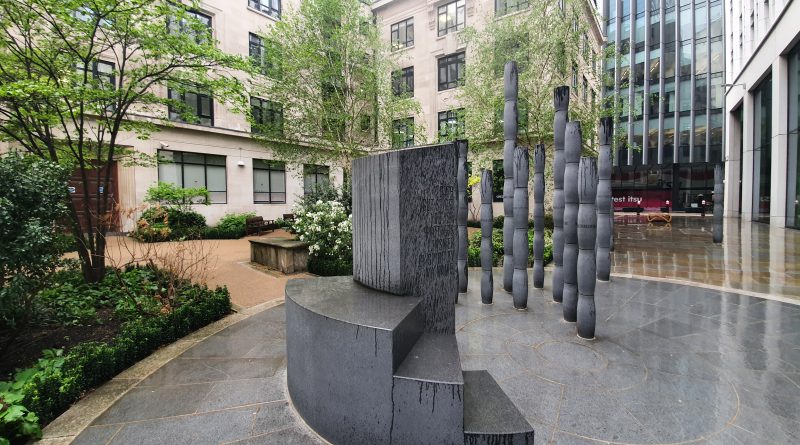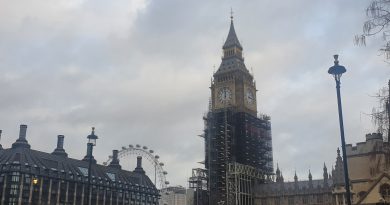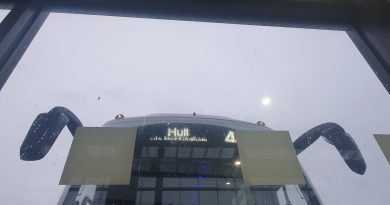London – City of London – Gilt of Cain (Slave Trade Monument)
This was on the wonderful walk around London led by Des yesterday evening, focusing on the issue of slavery and the links that London has to that (and there’s no shortage of such links). It’s a monument that was unveiled by Desmond Tutu on 4 September 2008 and I’m not sure that I’d have ever noticed it if it wasn’t for Des pointing it out. Not that it’s entirely hidden away, it’s next to 74 Fenchurch Street in what was once the churchyard of St Gabriel Fenchurch which was destroyed during the Great Fire of London and wasn’t rebuilt.
I like this monument, as the messaging behind it is clear without requiring a 62-page guidebook to explain its meaning and purpose. I initially thought that the pulpit was one where anti-slavery campaigners would preach their message and although this is the case, another meaning is apparently also that it is symbolic of how slave auctions might take place. The columns represent sugar cane and show people listening to the message at the pulpit, or, alternatively waiting to be sold to their new owner.
The sculpture is located near to where John Newton of St. Mary Woolnoth parish was the vicar between 1780 and 1807 and he was buried here, although he was later moved. This is important as Newton was a slave trader who changed his views and decided to campaign to end the trade and he’s perhaps best known today for writing the words to the hymn Amazing Grace.
Anyway, this sculpture is thoughtfully located, has a depth of meaning and is creatively intriguing. This is perhaps an ideal which similar projects should try and match in the future. The spelling of the word ‘Gilt’ in the name is also deliberate, it’s a play on the financial term and a nod towards how important that was to London at the time of the slave-trade, and still is today.
There’s a poem written by Lemn Sissay (who later became the official poet of the London Olympics in 2012) and some of the text of that is incorporated onto the monument.






